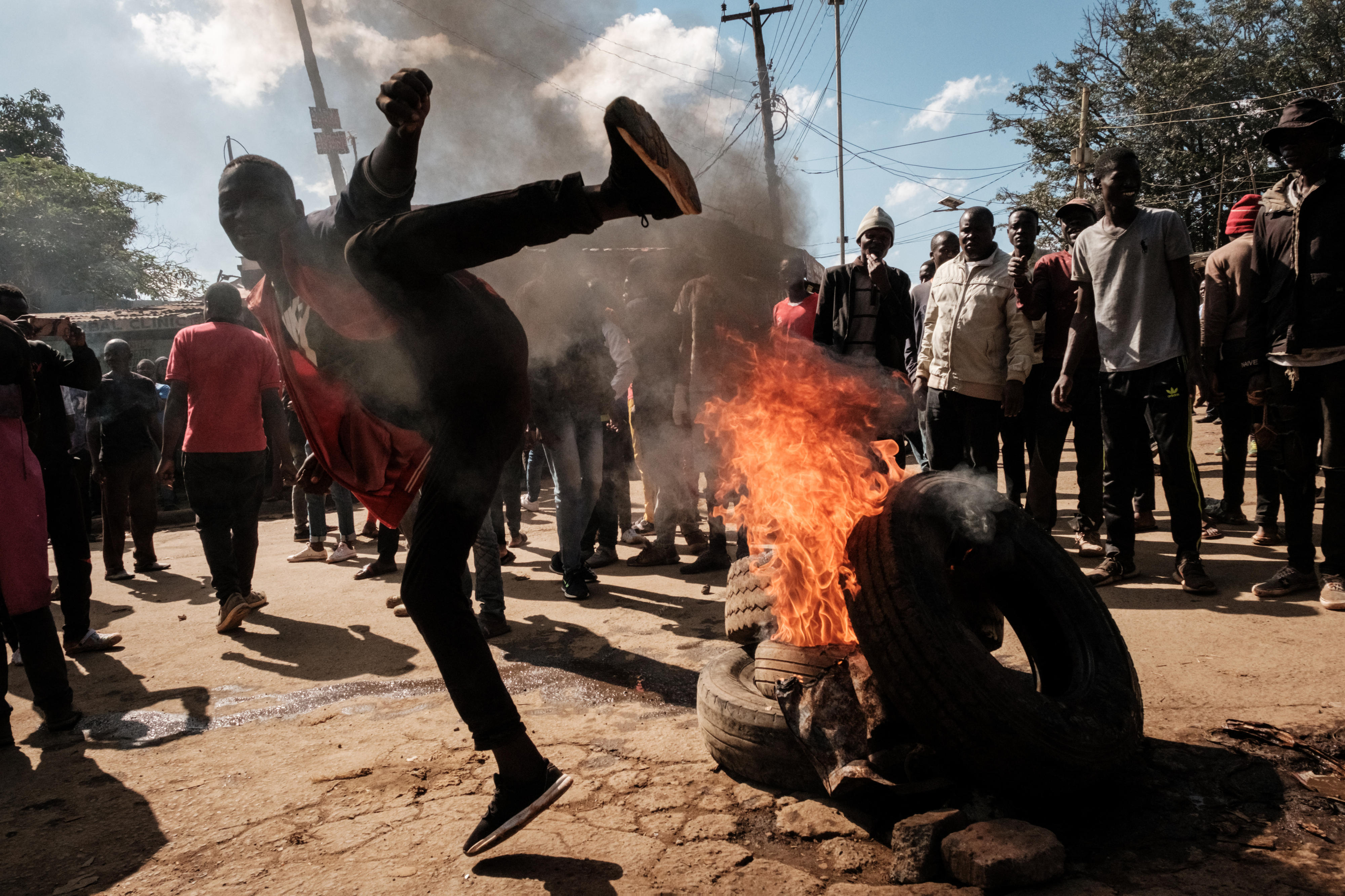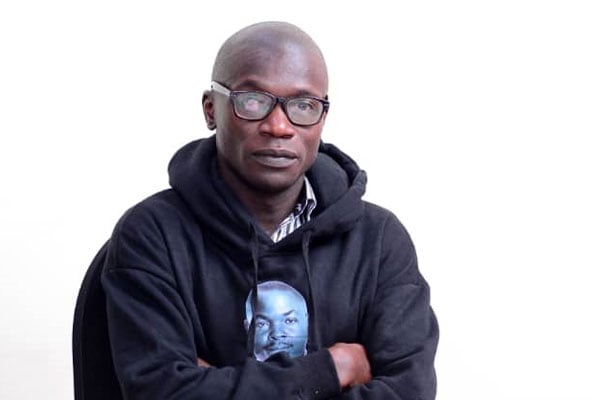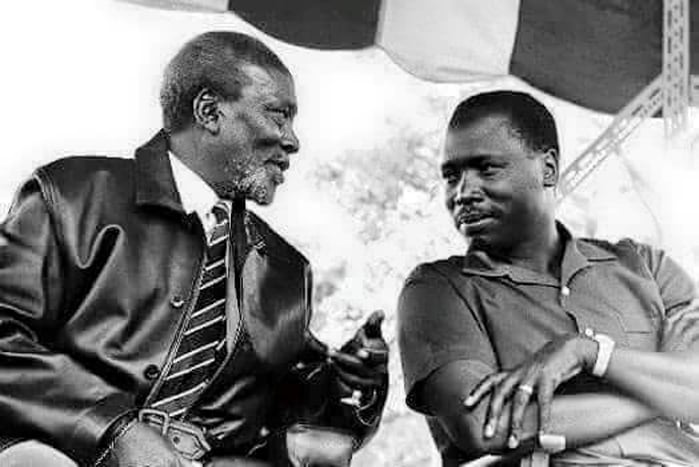Prime
Uganda in the crossfire again as Raila, Ruto tussle it out in neighbouring Kenya

A protester gestures on a street during a mass rally in Kibera, Nairobi, on Monday. PHOTO/ AFP
What you need to know:
- As protests led by Kenyan opposition leader Raila Odinga entered the second week, business leaders in Uganda expressed serious concern.
- As Derrick Kiyonga writes, the anxiety is justified because whenever Kenya is unstable, the fate of other economies in the region is at stake.
When your neighbour’s house is on fire you can’t be relaxed. The place where I go to the well is on fire, which means I’m disturbed and encumbered,” said Stephen Asiimwe, the executive director of the Private Sector Foundation Uganda (PSFU), who was referring to the anti-government demonstrations called by Kenyan opposition leader Raila Odinga for every Monday and Thursday.
The East African Business Council (EABC) also sent an ominous message.
“The past years have provided good lessons for the private sector to follow, but it is still very undesirable for such disruptions to get in the way of people’s lives and livelihoods,” said Simon Kaheru, the vice chairperson of EABC.
“We are going to find losses quite painful even in terms of shelf-space losses at our export destinations- which is the last thing we need in the current global environment.”
Kenyan opposition leader Raila Odinga has justified the protests, which have raged for the second week, saying they are against the high cost of living and what he terms the integral opacity of Kenya’s electoral body, the Independent Electoral and Boundaries Commission (IEBC) which declared William Ruto, his former ally, winner of last year’s presidential elections by 50.5 percent - narrowly edging out Odinga who got 48.9.
With Odinga promising to lead led the demonstrations, which have seen property ruined, indefinitely Kenya’s Western allies like the United States (US) have already issued a security alert to its citizens living in Kenya, alerting them of countrywide anti-government demonstrations that could take place weekly for an unspecified period of time.
“Avoid crowds, keep a low profile, and notify friends and family of your safety. Beware of your surroundings and review your security plans,” the security alert said adding, “American citizens should remain alert in areas frequented by terrorists, keep their travel documents updated and carry proper identification documents, including their passports and current Kenyan visas, and put in place evacuation plans.”
If the Americans are concerned, then the East Africans, more so Uganda, have reasons to worry if the protests are prolonged.
Kenya – whose Gross Domestic Product (GDP) is worth $110.35b and is the biggest economy in the East African Community – has always been seen by the West as the paragon of stability when compared with countries in the region that have been ravaged by civil wars.

Mr Raila Odinga (C), the leader of the Kenyan opposition coalition Azimio la Umoja, speaks to supporters during a mass rally in Mathare slum in Nairobi last week. PHOTO/ AFP
“But there are less romantic reasons for Kenya’s disproportionately high profile. The most advanced economy in the region, thanks in part to the network of roads, cities, railroads, and ports left by the British, Kenya has held linchpin status ever since independence by mere dint of what it is not,” British author and journalist Michela Wrong writes in her book It’s Our Turn to Eat in which she demonstrated the endemic corruption in Kenya.
“It has never been Uganda, where Idi Amin and Milton Obote demonstrated how brutal post-colonial rule could turn; or Rwanda, mourning a genocide that left nearly a million dead; or Sudan, venue for one of the continent’s longest civil wars,” she continues.
“In place of Ethiopia’s feeding stations and Somalia’s feuding warlords, it offered safari parks and five-star coastal hotels. Kenya’s dysfunctional neighbours have always made it look good in comparison.”
When he was campaigning for the presidency last year, Odinga had also cited Kenya’s superiority in the region.
“Look at Somalia, look at Ethiopia, look at South Sudan, look at Uganda,” he said. “Kenyans don’t want to be compared with the worst of the worst in the world. We should be compared with success stories.”
But what always worries Ugandans and other East Africans whenever Kenya is unstable is the fate of their economy since Kenya’s Mombasa port plays a big role in the region’s trade.
“If this continues unabated it’s going to cause us problems in the region,” Asiimwe says. “First of all, Mombasa is responsible for our entry and exit of imports and exports out of Uganda, South Sudan, Democratic Republic of Congo (DRC), Rwanda, Burundi, and Northern Tanzania. So, the entire portfolio is on tension because this can cause delays and things can escalate into vandalism.”
The importance of Mombasa port is borne out in the 2021 statics from Kenya Ports Authority (KPA) which showed that Uganda (76.7 percent) accounted for the vast bulk of transit cargo through Mombasa.
South Sudan (10.6 percent) and the DRC (5.7 percent) were the other popular destinations. Uganda felt the ramifications of relying on Mombasa port in 2007 when a contested two-horse race between Mwai Kibaki, who has since passed on, and Raila Odinga climaxed, with either party claiming victory.
This activated chaos that paralysed the northern corridor route from Mombasa port through Malaba used by the hinterland for imports, including petroleum products. The oil shock triggered by the 2007 poll occupied a couple of months and precipitously spiked prices at the pump.
“Right from January 1, [Uganda] closed its border in Busia to keep out violence, stations of big oil companies (Shell, Caltex, Total, Mobil or Gapco) doubled the price of petrol per litre [from Shs2,400 to Shs6,000], and increased the price of diesel by 10 percent,” Mr Ronan Porhel wrote in 2008 in a paper titled The Economic Consequences of the Political Crisis.
He added: “Moreover, this shortage of fuel forced the country to suspend some internal flights. The inflation also affected the main products imported from Kenya, following the depletion of stocks in all shops in the city of Kampala. The price of some products such as soap, increased by 100 percent.”
There have been similarities between the current protests and those that happened in 2007 with residents of Kibera, the largest slum in Nairobi, and the largest urban slum in Africa, counting their losses following a night of arson attacks by criminals who targeted a Presbyterian Church and a number of stalls behind a mosque at Olympics.
“What happens if they attack the railway lines that bring goods to Uganda?” Thaddeus Musoke Nagenda, the chairperson of Kampala City Traders Association (Kacita), asks. “What happens if they target our traders that use buses? Our people will suffer great losses.”
Obviously, Uganda’s alternative would be to use a central corridor which would mean using Tanzania’s port of Dar es Salaam port.
“Yes. Dar es Salaam is certainly the other alternative we can use. Another is to go through Tanzania and then Namanga to go to Mombasa, if the protests are concentrated in Nairobi and areas in between,” Kaheru says.
The problem is demonstrations in Kenya have spread to Odinga’s stronghold of Kisumu that’s close to the Ugandan border, prompting Kisumu authorities to ban demonstrations in that area.

Kenyan president William Ruto. PHOTO/ FILE
“All public demonstrations within Kisumu County have from today been suspended indefinitely so that we join demonstrations in Nairobi,” Kisumu County governor Peter Anyang Nyong’o wrote this week. “That the people of Kisumu remain committed to the aspirations of Azimio La Umoja and it’s the campaign for a better Kenya.”
Besides Uganda, the Dar es Salaam port also serves land-locked countries—Malawi, Zambia, DRC, Burundi, Rwanda, and Uganda—and also handles more than 80 percent of cargo destined for inland Tanzania. In the recent past, there have been efforts by Tanzanian authorities to expand, modernise, and market the port.
Whiles Dar es Salaam port currently handles 17.03 million tonnes, in 2022 the Tanzania Port Authority (TPA) said it envisages boosting the capacity of 30 million tonnes by 2030 after setting up a one-stop centre at the Dar es Salaam port housing import and export agencies aimed at boosting capacity.
When President Samia Suluhu Hassan of Tanzania visited Uganda in May last year, she dangled a host of incentives to attract Ugandan traders back to the Dar es Salaam port.
This included removing trade barriers and improving investment in transport along the central corridor. President Suluhu secured a bilateral agreement with Uganda to bring down the tab that Uganda-bound cargo trucks from Dar es Salaam through Mutukula picked from $500 (Shs1.9m) per 100km to $10 (Shs38,000).
This went into effect at the start of the 2022/2023 financial year. Even with these incentives most Ugandan traders have chosen to stick with Mombasa citing the costs of going through Dar es Salaam as being high.
“The Tanzanian president promised us that she would expedite the movement of goods from Dar es Salaam to port Bell using the train which would ensure that it creates a serious business corridor,” Asiimwe says.
“It will take time for our traders to appreciate the Dar es Salaam route but with such scenarios we have no option but to explore other alternatives way from Mombasa.”





